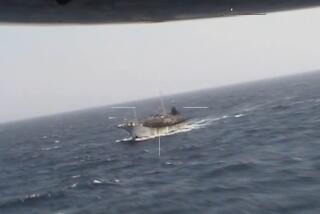Understanding how stowaway organisms travel the high seas
Ports like Los Angeles and Long Beach are key to the global economy: crossroads where billions of dollars in cargo arrive and depart each year, floating on board thousands of vessels from all over the world.
Increasingly, however, large ports are also playing a key role in Earth’s ecosystem, as species from all corners stow away on ships and make their way into ports -- sometimes, with devastating consequences for native wildlife. For example, the Chinese mitten crab, which comes from the Pacific Coast of China and Korea, made its way to the U.S. West Coast on ships during the early 1990s and was first spotted in the Chesapeake Bay about 15 years later. Fisherman catching shrimp have reported that the mitten crabs, which have patches of hair on their claws, get tangled in nets and can kill shrimp. Because they burrow, invasive mitten crabs can also speed erosion in levees and banks.
This weekend, researchers released a new study that showed exactly which shipping routes among the world’s harbors pose the most risk of carrying invasive organisms in the ballast water ships carry on board to help them balance their loads. Writing in the journal Ecology Letters (subscription required for full text,) mathematician Bernd Blasius of the Institute for Chemistry and Biology of the Marine Environment at Carl von Ossietzky University in Oldenburg, Germany and co-authors described how they analyzed shipping records to estimate the risks. (To learn more, check out the Los Angeles Times story about the study.)
The scientists have also put together a really nifty website to help readers walk through their research. The site includes a summary of the research approach, as well as detailed breakdowns of risks, region by region.
People on the California coast, for instance, can play around with the “Invasion flows” map, which shows invasion probabilities between ports, and quickly see that shipping routes originating in Asia are the most likely to affect the Western U.S., but that trade around the world can have an impact. Europe, in the meantime, faces the largest risk from the U.S. East Coast. A separate page on the site lets readers look at the same data using Google Earth.
Click on the “Invasion sources” link to see what regions are most likely to send invasives into another region (Northern Europe is the source of a surprisingly large chunk of the critters making their way to California ports, for instance; the Mediterranean, a significant source for Australia). The team also include data detailing the risks posed by different ship types, depending where the boats are sailing.







